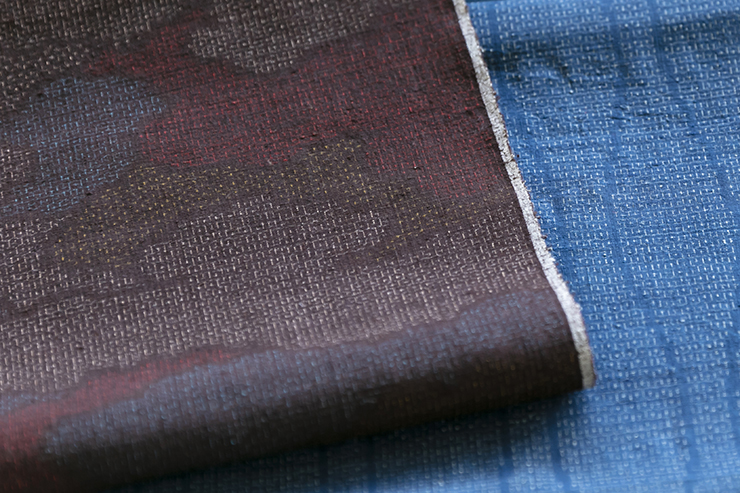
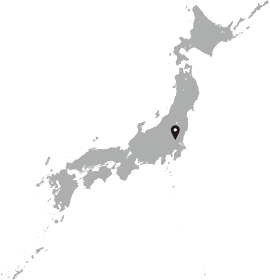 Wearing a sheen cloth of silk sometimes gives the wearer the virtual sensation that the cloth itself is breathing. There are many myths and folklore in both China and Japan that depict the origin of sericulture: the very mystical process of weaving textile with the thread spun from the cocoon produced from the mouth of a worm.
Wearing a sheen cloth of silk sometimes gives the wearer the virtual sensation that the cloth itself is breathing. There are many myths and folklore in both China and Japan that depict the origin of sericulture: the very mystical process of weaving textile with the thread spun from the cocoon produced from the mouth of a worm.
The production of silk textile is believed to have started in China around 3000 B.C. Silk was traded with gold among countries across the Eurasia continent, and the trade route was known as the Silk Road. The method of silk production was brought to Japan sometime in B.C. It was thereafter spread all over the nation by the people from the continental China, who also brought in other crafts such as ceramics and textiles.
About 100 km northeast from Tokyo sits the town of Yuki. With plenty of limpid water from the river, the town was fit for cultivation of mulberry, the leaves of which silkworms feed on, and therefore has been an prosperous place for sericulture industry since ancient times. The sample of silk canvas woven in this place over 1300 years ago is still preserved, and is considered to be the original form of Yuki Tsumugi. The town used to be the castle town of the Yuki clan, and the reminiscence of the glory of the olden days can be felt from the old housing and storehouse buildings that still remain, as well as from the time that seems to pass very slowly. Six assembling wholesaler of the locality remain in business today, and in about 80 weaving shops that gathered around them, weavers still work at their looms.
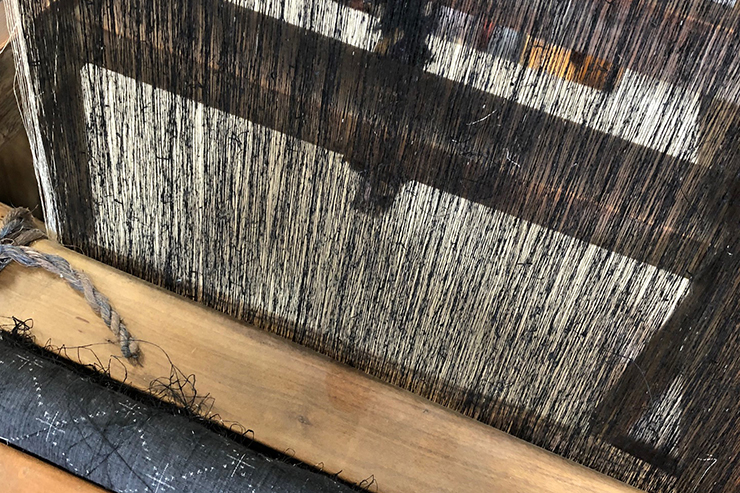
Yuki Tsumugi is a type of silk textiles woven with the silk yarn made from floss silk, which are spun from silkworm cocoons. Only men were allowed to wear the textile, most of which were either plain or striped. Later when women were allowed to wear them, more decorative patterns such as splashed patterns became more popular. Especially the textile woven with the crepe technique gained high popularity, with its bumpy texture created by twisting warp yarns a few thousand times and starching prior to weaving, then putting hot water on the woven cloth to wash off the starch so that the shrunk yarn expands back. Wide varieties of design were created by each assembling wholesaler.
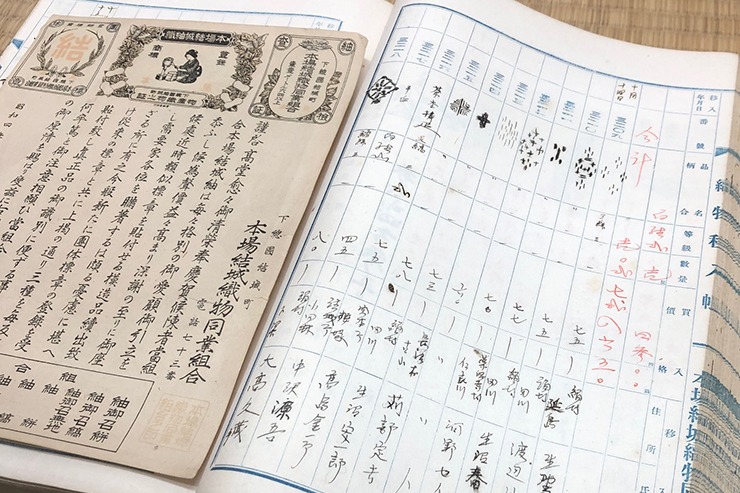
Total of 1360 warp yarns are used in Yuki Tsumugi. 34 manufacturing process including spinning and tying of yarn, stamp dyeing, yarn starching and weaving are required for producing a roll of the textile. Especially the kind known as Honba Yuki Tsumugi is woven on the handlooms called jibata, with which the weavers strap the stretched warp yarn around their waist to adjust the tension, allowing them to become one with their looms. This method enables the soft texture of hand-spun yarn to remain in the woven product. Approximately 20 cm of cloth can be woven in a day.
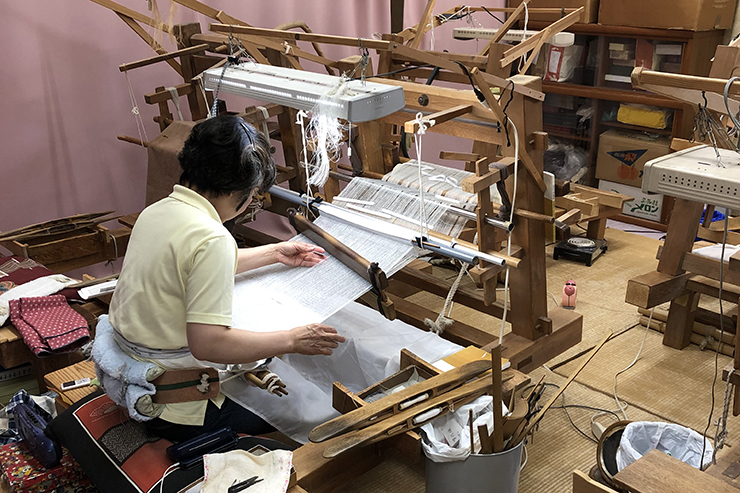
The floss silk the yarn is spun from is produced in Fukushima, the prefecture next to Yuki, at the wholesale store that has been in the business for 400 years. When silkworms become pupas, they are dipped into hot water while still asleep in their cocoons. Then only cocoons are taken out and brought to the floss silk makers. Four to five cocoons are put together and stretched to make a pouch-shaped fukuro-mawata (literally, ‘pouch floss silk’), which are then delivered to yarn spinners.
Squeaky sound leaks out along with soft lights from houses. Around midnight, when everyone is sound asleep, women of the village begin their yarn spinning. Over generations, the women who married into the family of the spinners would learn how to spin by watching their mothers-in-law. Every night available between their farm works, silk yarn is pulled from the floss silk wrapped around the tool called tsukushi, and into the bucket called oboke. Non-twisted yarn is used for Yuki Tsumugi. Pounding on the thin non-twisted yarn while weaving it enables the production of the durable yet soft textile – the precious textile unlike any other in the world. It takes about ten years for a spinner to be able to make an even non-twisted yarn. It is believed that the process is so delicate that even the slightest change in the health condition of the spinner would show on the quality of the yarn. Fine line of yarn slowly stretches out from the floss silk. The silk yarn seems to emit light in the oboke bucket, curled up and sleeping.
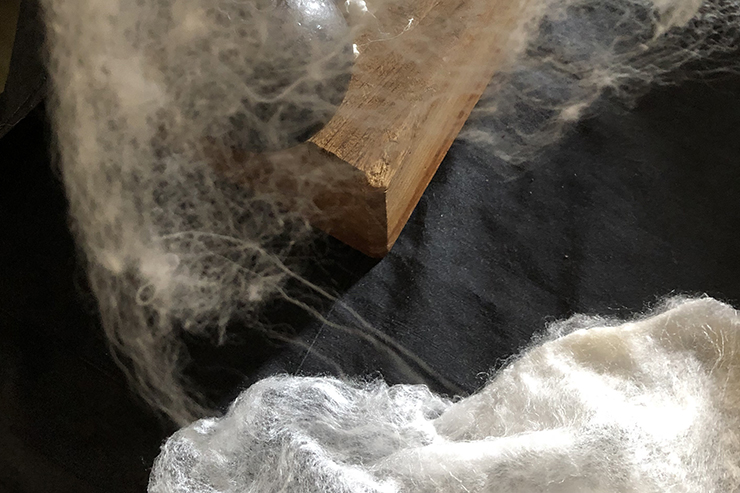
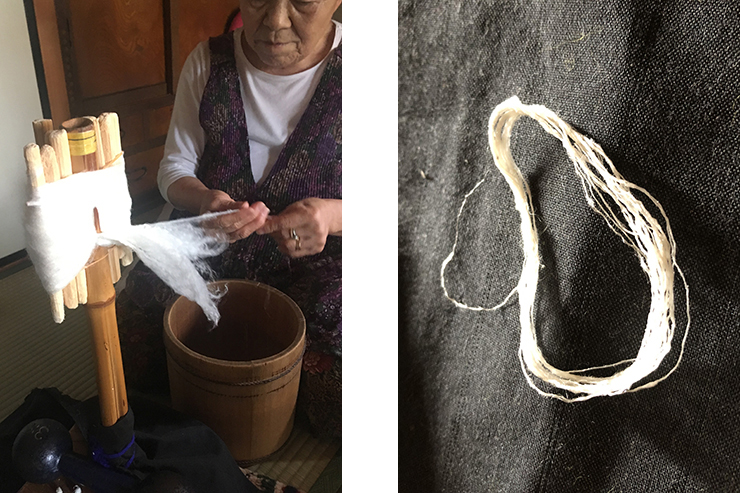
The warp and weft becomes visible at close observation. Layers and layers of the warp and weft create a wide sheet of the textile. Lacking any of these steps of creation would forestall the completion of the textile.
The head clerk of the assembling wholesaler stops by at a house of the spinner, “just to see how things are going.” He claims that he could tell everything just by looking at the yarn. Securing and training of successors for the process of yarn spinning has been a major issue that needs to be solved at the moment.
Yarns are spun one string by one string, and woven to make the textile. Just as the townscape of Yuki kept in beautiful shape today, it seems that every workers in the industry are united to weave the long, long story of the town of Yuki like an endless roll of textile, while inheriting and handing down the technique, which has kept unchanged for 1500 years in the flow of time.

- Textile :
- Aizu Momen
- Textile of Okinawa
- Ryukyu Bingata
- Ryukyu Kasuri
- Yuki Tsumugi
- Old textile
- Dyeing :
- Indigo

